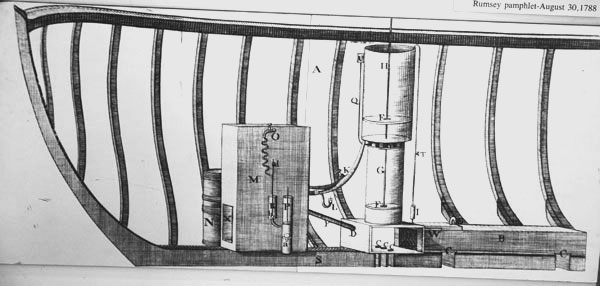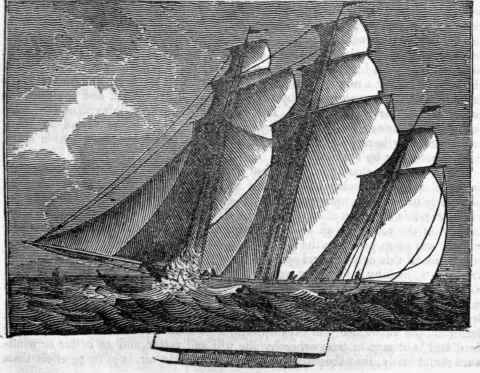And that a kelson of the creation is love; (p 31)
What is a kelson?
 James Rumsey’s Steamboat Design–from his drawing in 1788
James Rumsey’s Steamboat Design–from his drawing in 1788 
http://chestofbooks.com/crafts/mechanics/Engineer-Mechanic-Encyclopedia-Vol1/Boat.html accessed September 8, 2009.
The Kelson so is a wooden vessel that lies parallel with its keel. What is a keel you ask? A keel can refer to either of two parts, a structural element, or a hydrodynamic element. These parts overlap. As the laying down of the keel is the initial step in construction of a ship, the construction is dated from this event.[1] Now back to the kelson or keelson. The kelson traverses above the timbers, frames, or in a larger vessl, the floor. It is fastened to the keel to impart additional longitudinal stiffness but is primarily used to bind the longitudinal members. In an open boat, the kelson is often fastened directly to the keel. [2]
And that all the men ever born are also my brothers
and the women my sisters and lovers,
And that a kelson of the creation is love;
And limitless ae leaces stiff or drooping in the fields,
And brown ants in the little wells benath them,
And mossy scabs of the wormfence, and heaped stones, and
elder and mullen and pokeweed.
Whitman’s choice of words in this section of “Song of Myself” are quite interesting. He seems to illustrate a oneness with human kind and nature but writing about it in the form of a structure, a kelson. Whitman finds a formula in this unity and understands that there is a greater plan or a structure to it all, whether that it is designed by god or science, there is order to the plan.
[1] “keel.” The Oxford Companion to Ships and the Sea. Oxford University Press. 2006. Encyclopedia.com. 8 Sep. 2009
[2] Ibid.


 In his frontispiece, Whitman has a nonchalant, inviting expression. A hand on the hip usually implies a matter-a-fact attitude, almost childlike. Whitman projects an air of casualness with his top button opened and his tipped hat.
In his frontispiece, Whitman has a nonchalant, inviting expression. A hand on the hip usually implies a matter-a-fact attitude, almost childlike. Whitman projects an air of casualness with his top button opened and his tipped hat.